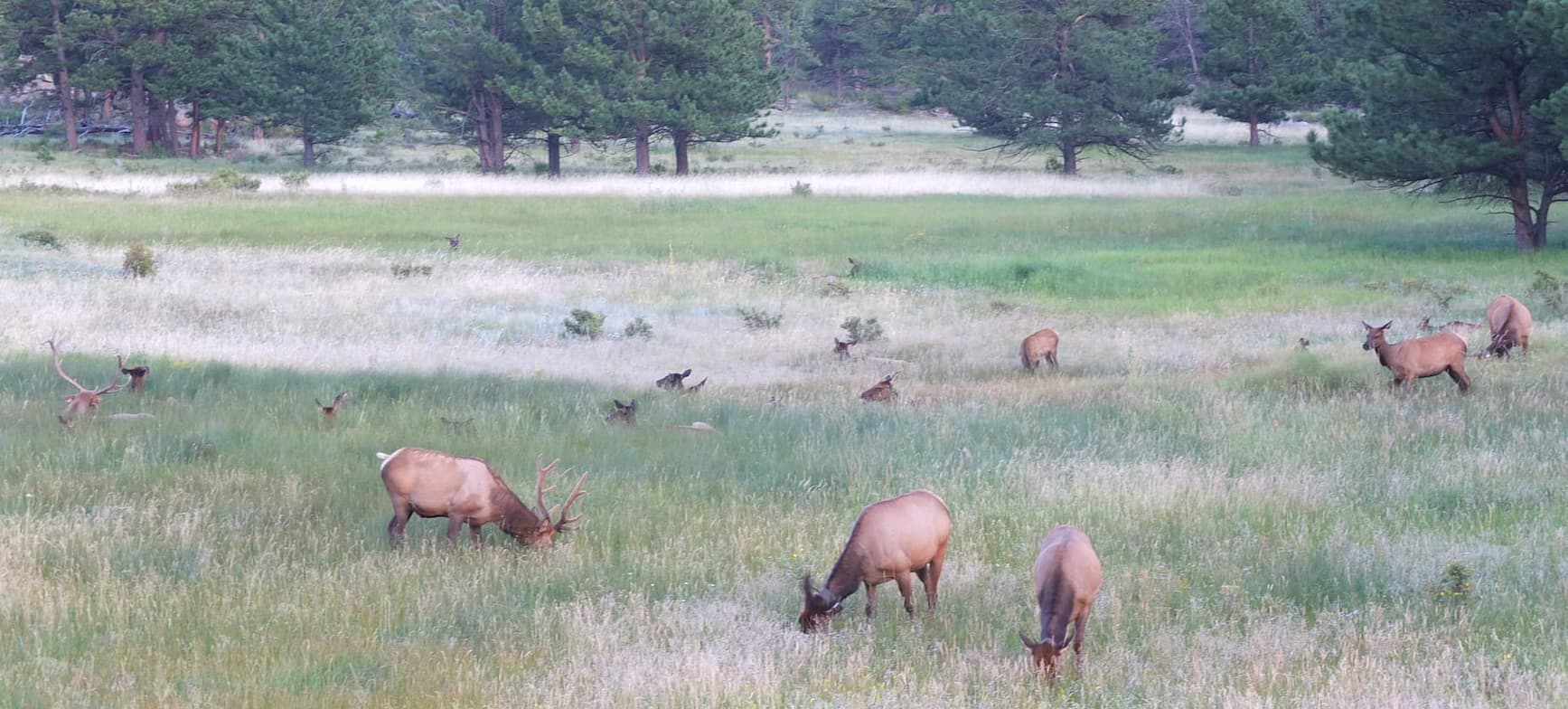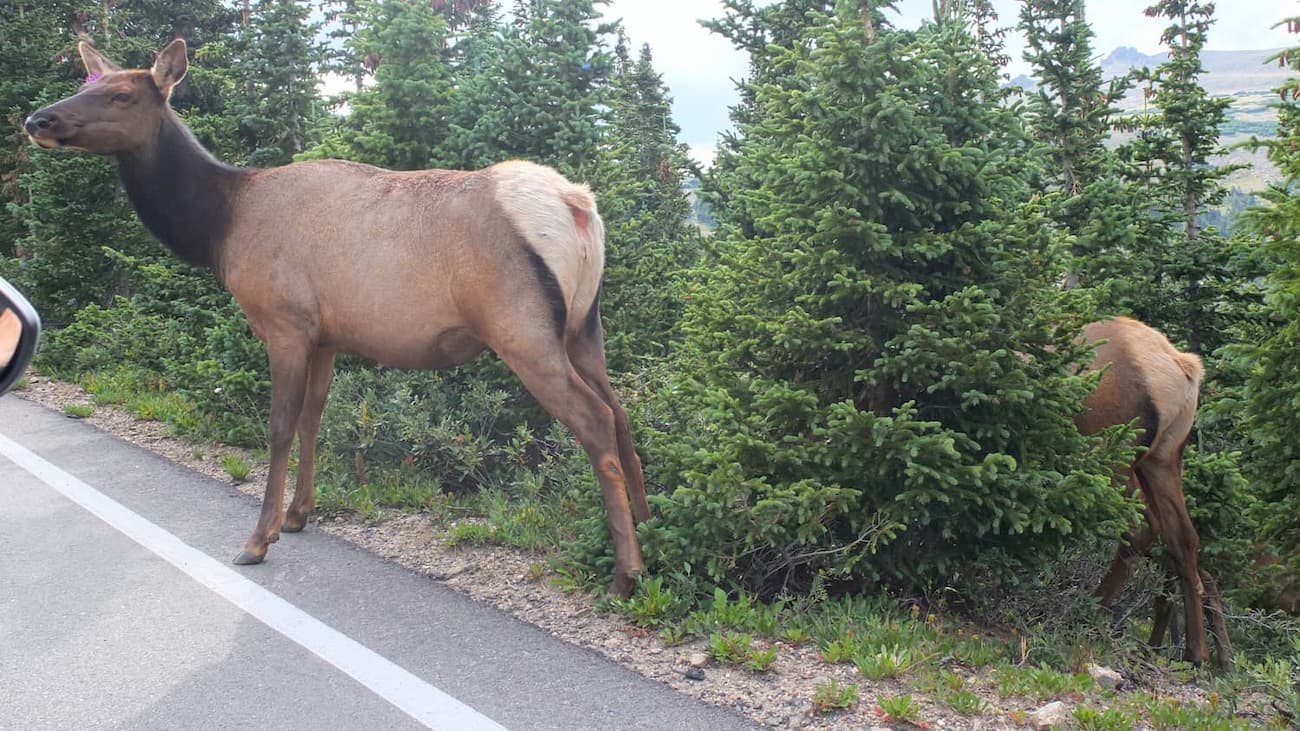Elk or wapiti

Herd of wapitis in a Rocky Mountains vallery in Colorado.
The wapiti or elk (Cervus canadensis), is a large cervid, can reach 1.5m7 4,9 feet in height at the shoulders and 500kg / 1100lb in weight. In Europe the moose( Alces alces) are named elk. This puts it ahead of its relative the European red deer (Cervus elaphos) in size. Males have large branched antlers while females lack it. They feed on herbs and leaves (although unlike the European red deer and other American deer, it has a predilection in its diet for herbaceous plants rather than the leaves of trees and shrubs), being able to eat up to 7kg a day. In winter they can also feed on tree bark. In spring they go uphill as the grassy meadows are covered with snow. It is distributed throughout much of North America, but also throughout Asia. They tend to group in large herds, although some males live alone. After a gestation of about 8 months, females generally give birth to a single calf, the calves at birth weigh about 15kg. Its main predators are the wolf, the bear and the mountain lion.

Wapiti female browsing the road.
Tags: ciervo, cervol, montañas rocosas, rocky mountains, elkmontserratnatural.com @Copyright 2020
Privacy Config